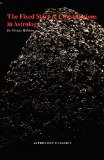

 |

|

The average rating for Fixed Stars and Constellations in Astrology based on 2 reviews is 4 stars.
Review # 1 was written on 2008-11-22 00:00:00 Koko Jent Koko JentFor astrologers, this work is unique. The contents include chapters on "The Fixed Stars in Astronomy," which goes into the history of astronomical observation and the distinction between stars far beyond the Solar System and solar planets; the astrological influence of the constellations (as opposed to that of the astrological signs, equal divisions of the Ecliptic into twelve zones which, due to the Earth's axial precession over the centuries, slowly change their orientation to the heavens); the lunar mansions; the astrological influence of fixed stars, nebulae, and stellar clusters; the influence of the stars in mundane astrology, or matters involving great cities and nations; the use of stars and constellations in medieval Magick, complete with sigils for each influential star and a list of constellations with their influences; the influence of stars in astro-meteorology, i.e., their influence on weather which, to pre-industrial peoples, was considered to be of dire importance because life for nearly everyone, even kings, revolved around farming; mathematical formulae for calculating stellar positions and the like; and a general index which, though not comprehensive, is very useful. For the constellations, or major astronomical divisions of the sky, he gives the influence of each. For the lunar mansions, or divisions of the sky according to the position of the Moon along a latitudinal celestial belt 10 degrees wide, he gives the Arabic, Hindu, and Chinese systems of these divisions and their influences. The section on the astrological influence of stars, nebulae, and clusters contains an introductory section; a table listing the objects in question in order of their celestial longitudes, from 0 degrees Aries through 359 degrees Pisces (the astrological signs, beginning with the point at which the Sun stands at the first moment of Spring each year, which must be corrected to reflect the increasingly eastward position of the signs relative to the constellations as time goes on due to precession of the Earth's orbit); and an alphabetically indexed list of these stars with some astronomical data, historical and mythological data, and the astrological influence of each star, including, where applicable, the influence of the Sun, Moon, planets, or a chart's Ascendant or Midheaven in conjunction with that star. Because of this, this work is of great value to astrologers, cultural anthropologists, Magickians, and alchemists. That said, like much of A. E. Waite's magnificently obscure writings, Robson's book has some problems. One of them is that he insists on referring to the star Vega as if its name were pronounced "Wega," confusing many readers. Once upon a time, that pronunciation of the letter "v" was standard among the Latins, just as its pronunciation like the letter "f" is standard for German today. But etymologically speaking, Vega may come from Greek or even Arabic sources, not Latin, and at any rate common usage has long since standardized its pronunciation as "Vega," i.e., with the "v" pronounced like that of "victory" or "volleyball." Then there is the matter of from which starting-point to date the extent to which precession has rotated the heavens to the west, and thus the astrological signs and their gearing-in to the constellations to the east. In one place Robson mentions that his stellar positions are given as of January 1, 1900, and that precessional calculations must be presumed to start there. But his list of bright stars and his catalog of them and their influences is specifically dated to January 1, 1920. I go with the latter -- but I use Burnham's Celestial Guide and any other definitive source of known high accuracy of physical coordinates of the stars to check that. Then there is his discussion of Hebrew Qaballah Tarot and their applicability to Magick based on stellar influences. So far, none of the authoritative works on either subject I've ever read bear him out as far as his understanding of either Qaballah or Tarot. These and other flaws impel one to strongly suggest that you should have on hand both Robert Burnham, Jr.'s Celestial Guide and Richard Hinckley Allen's Star Names: Their Lore and Meaning, both reviewed elsewhere on this site, not to mention an accurate listing of the right ascensions and declinations of given stars for a particular date to double-check Robson's data on just about everything. Even so, this is a fascinating work, one which can be very useful to people in numerous fields, and is well worth having in your personal library. |
Review # 2 was written on 2014-01-11 00:00:00 Lisa Vanschuyver Lisa VanschuyverSeriously important book to have on the shelf. Don't find many that are solely about the fixed stars and constellations. This is worth its weight in gold. |
CAN'T FIND WHAT YOU'RE LOOKING FOR? CLICK HERE!!!